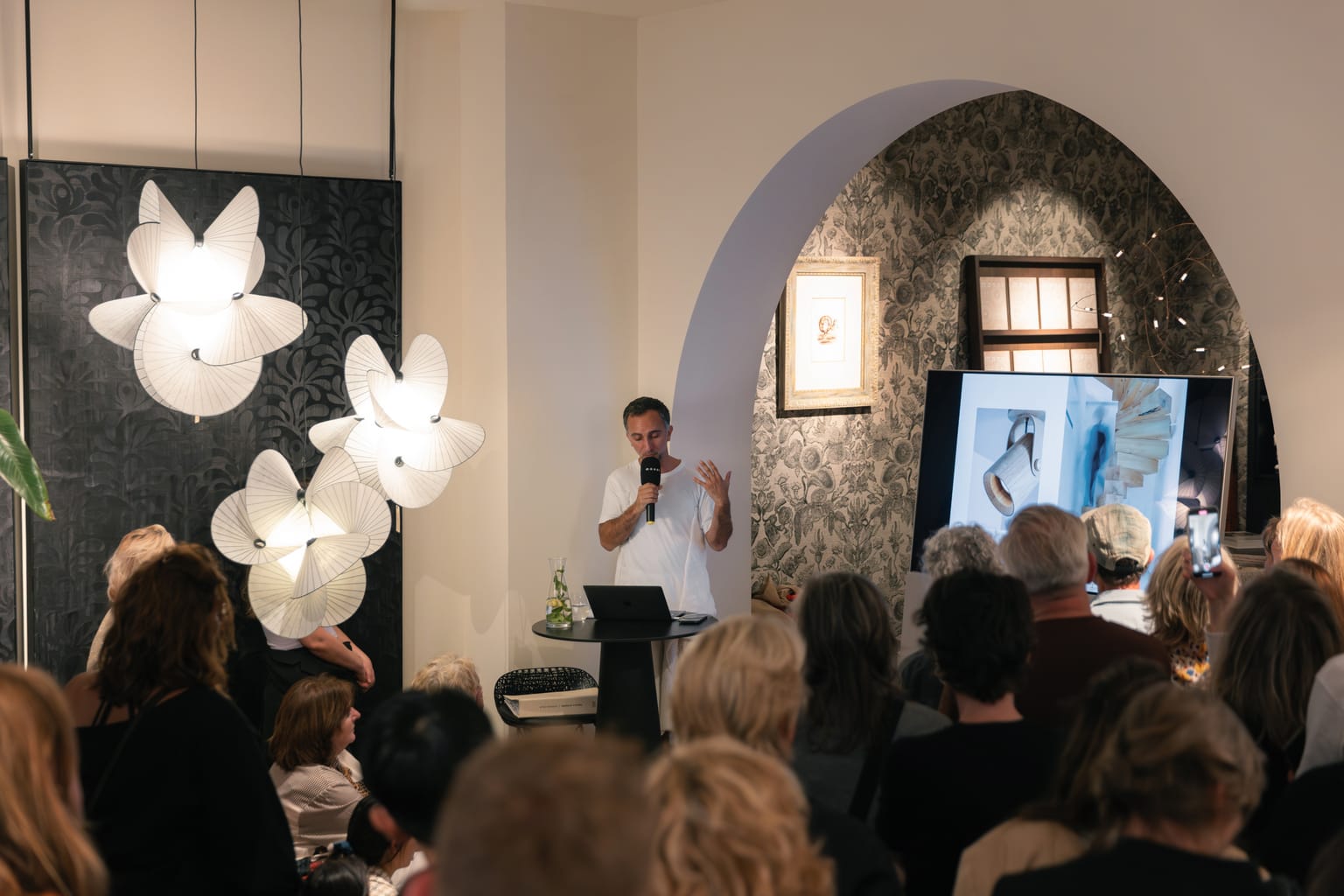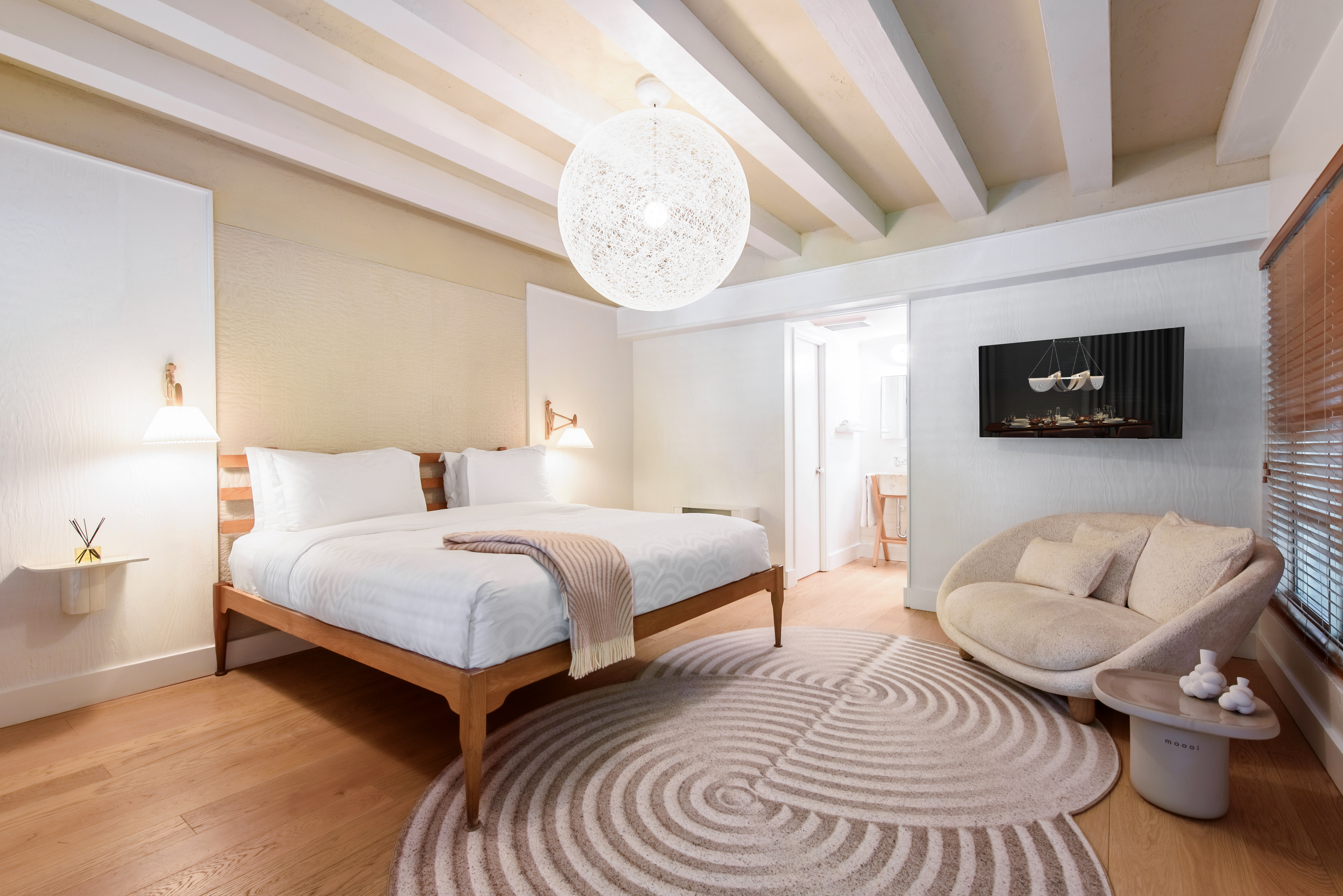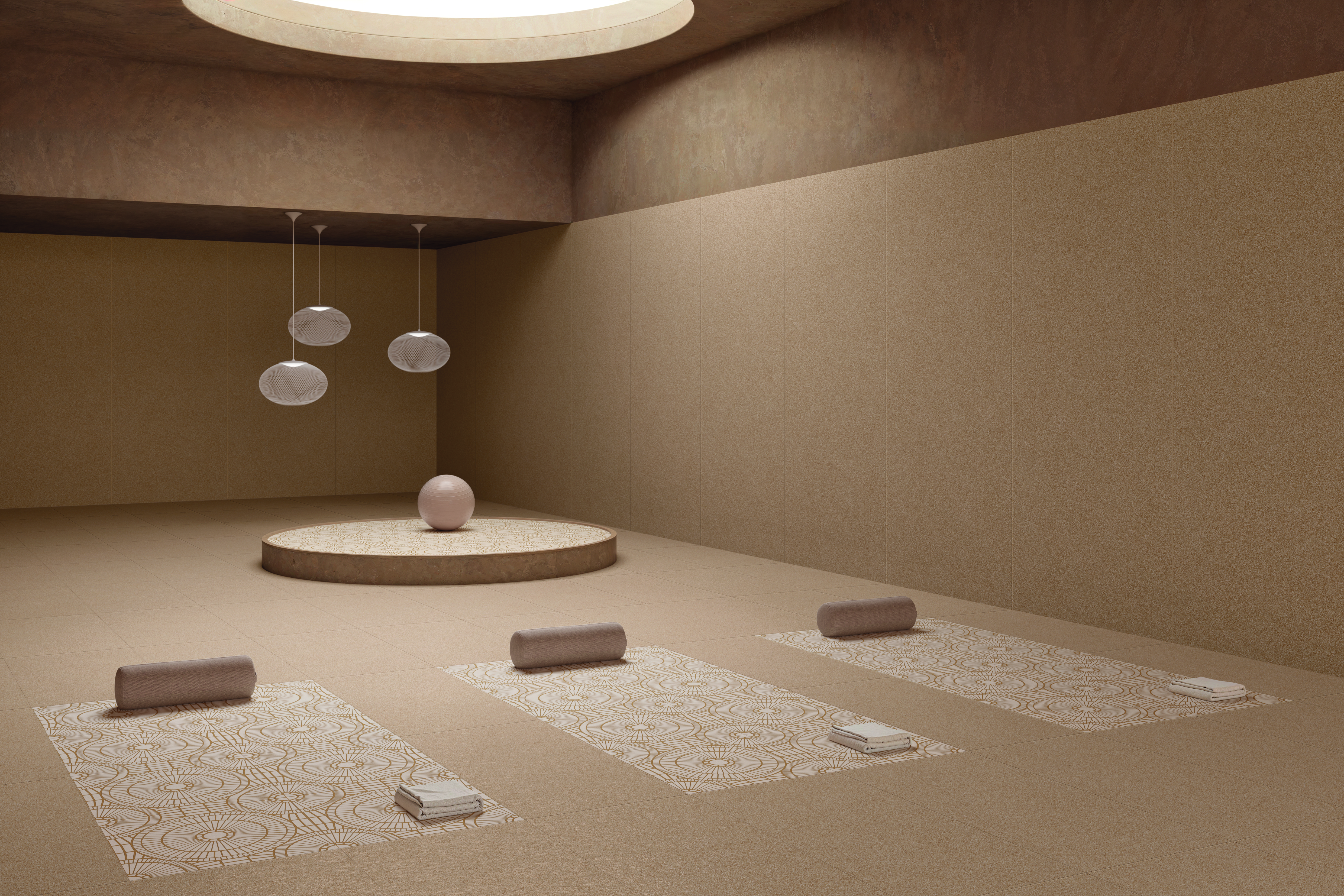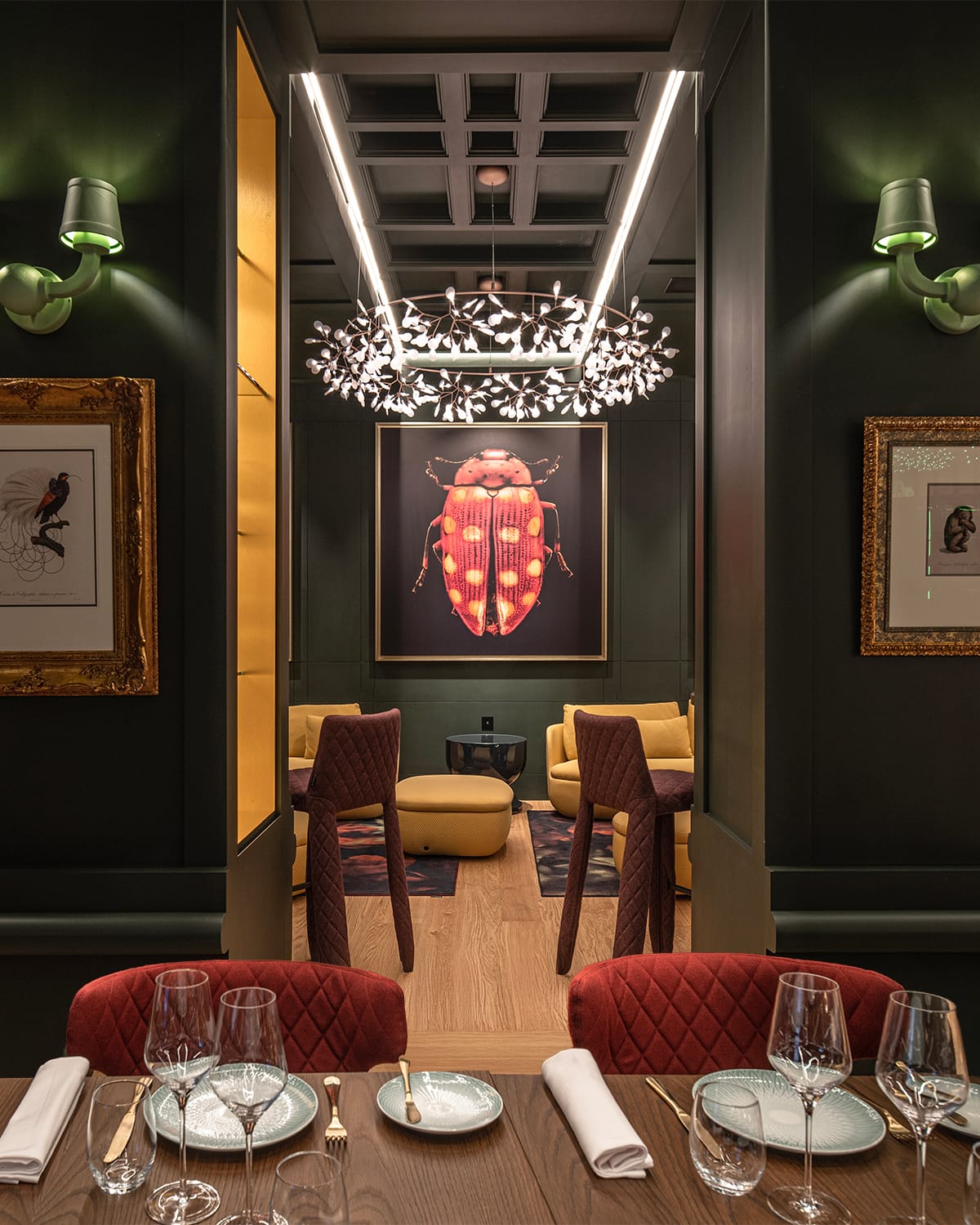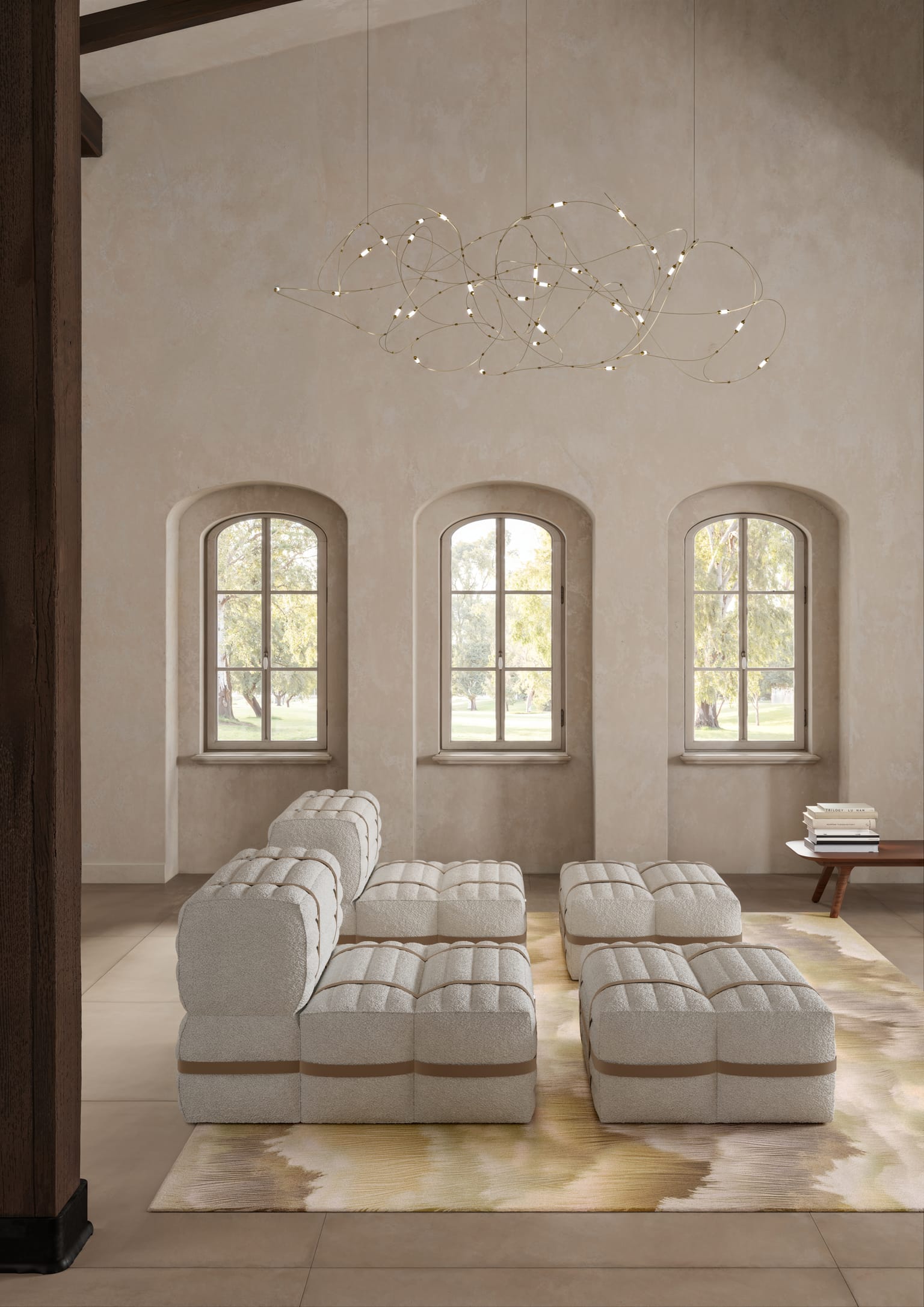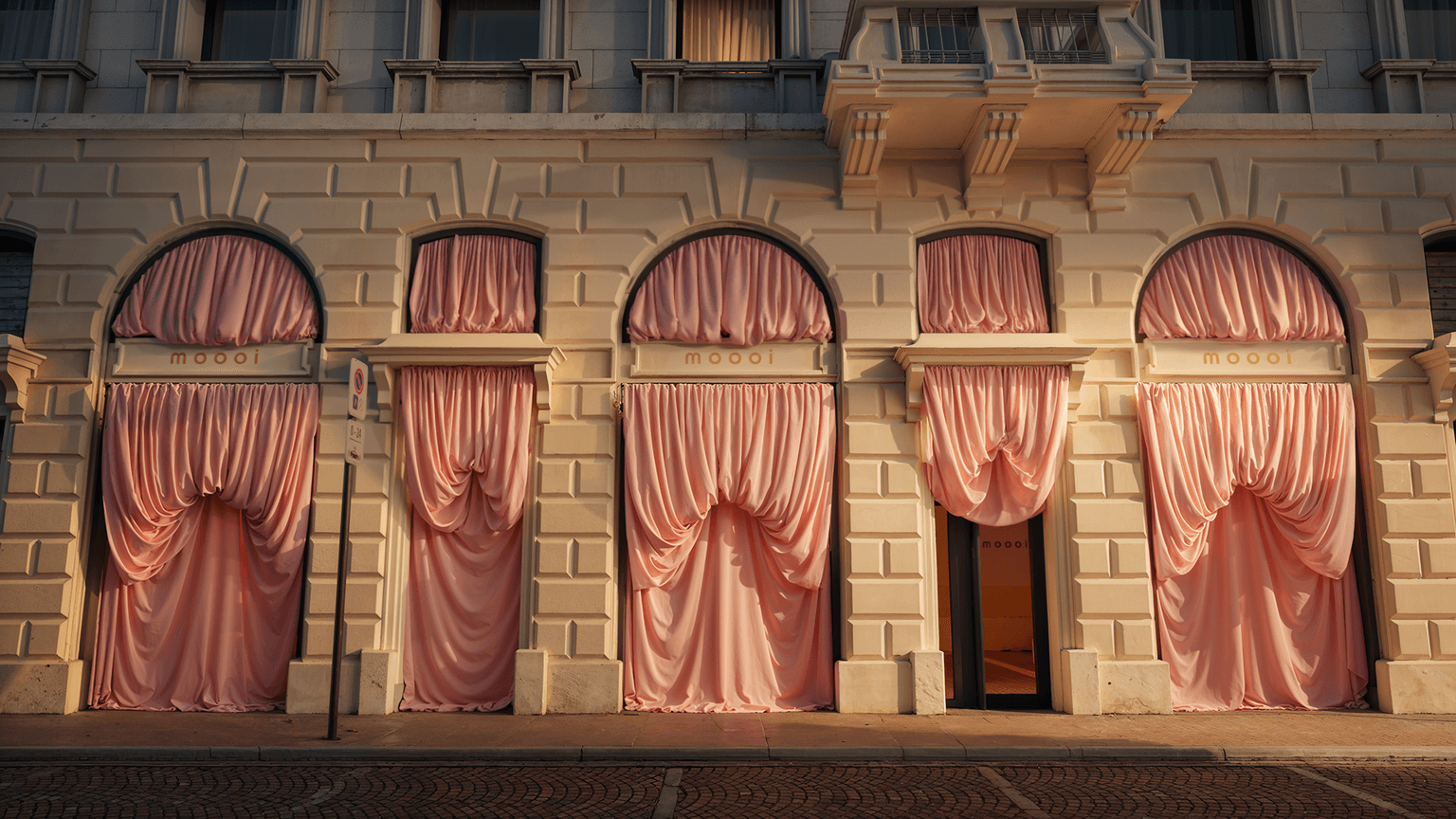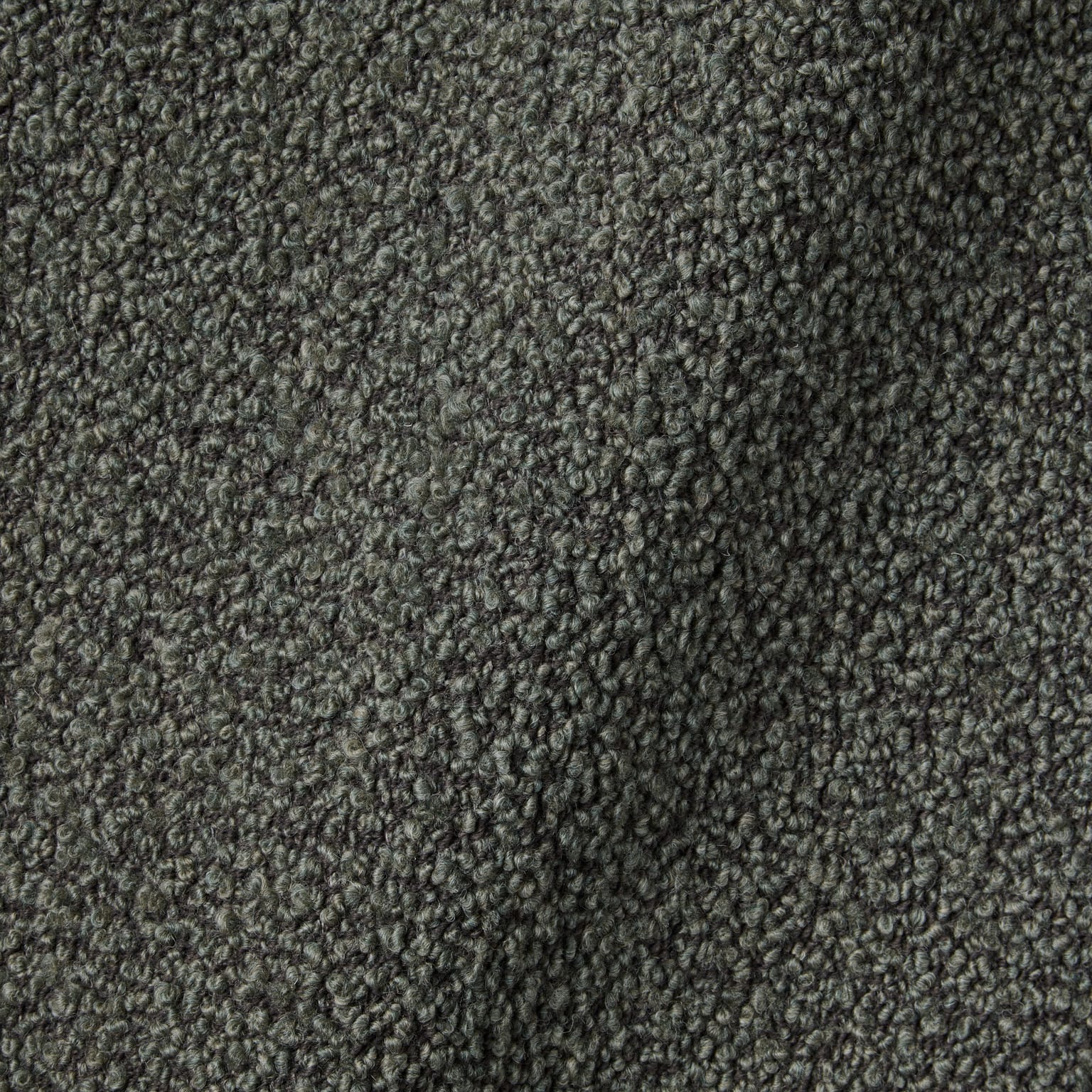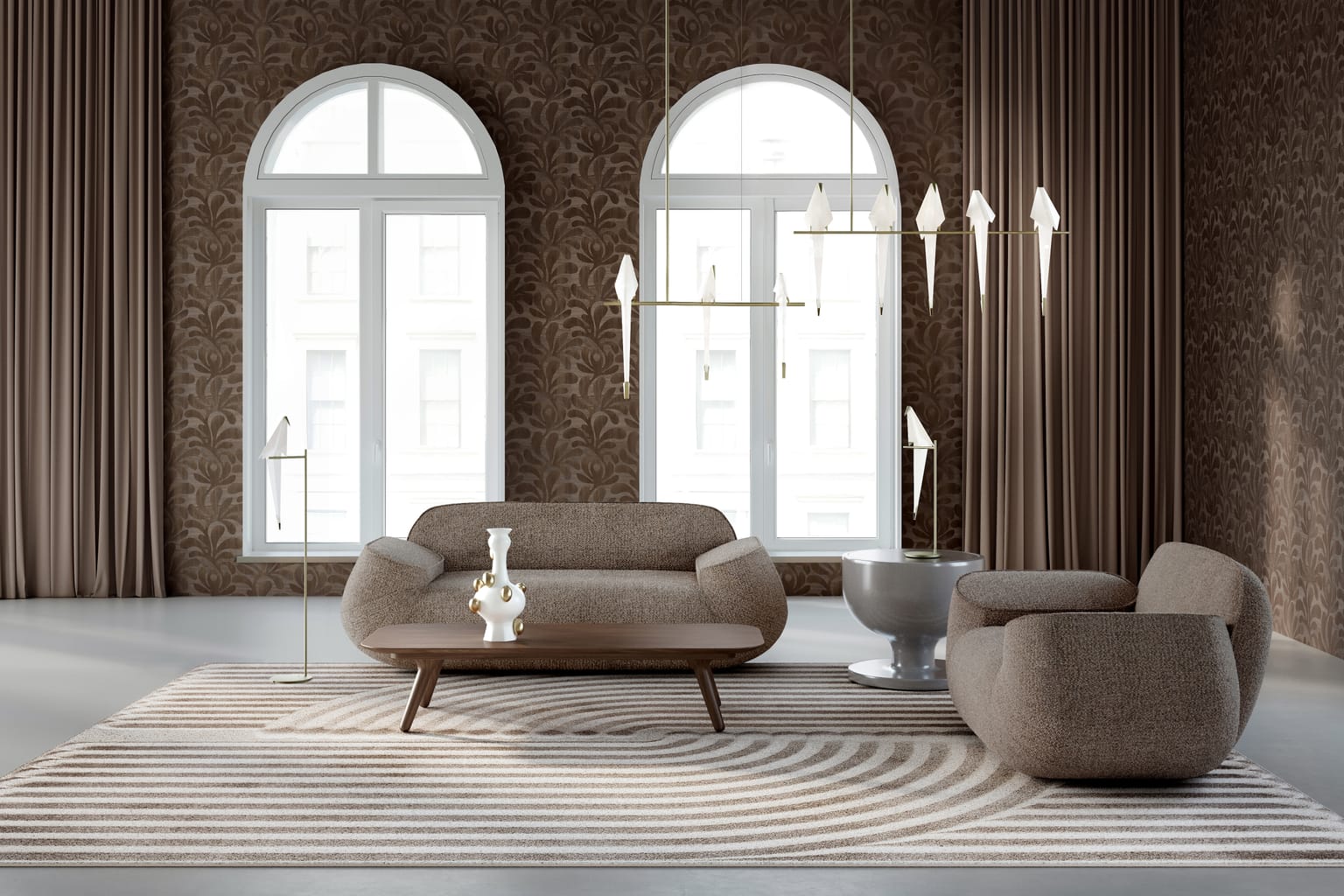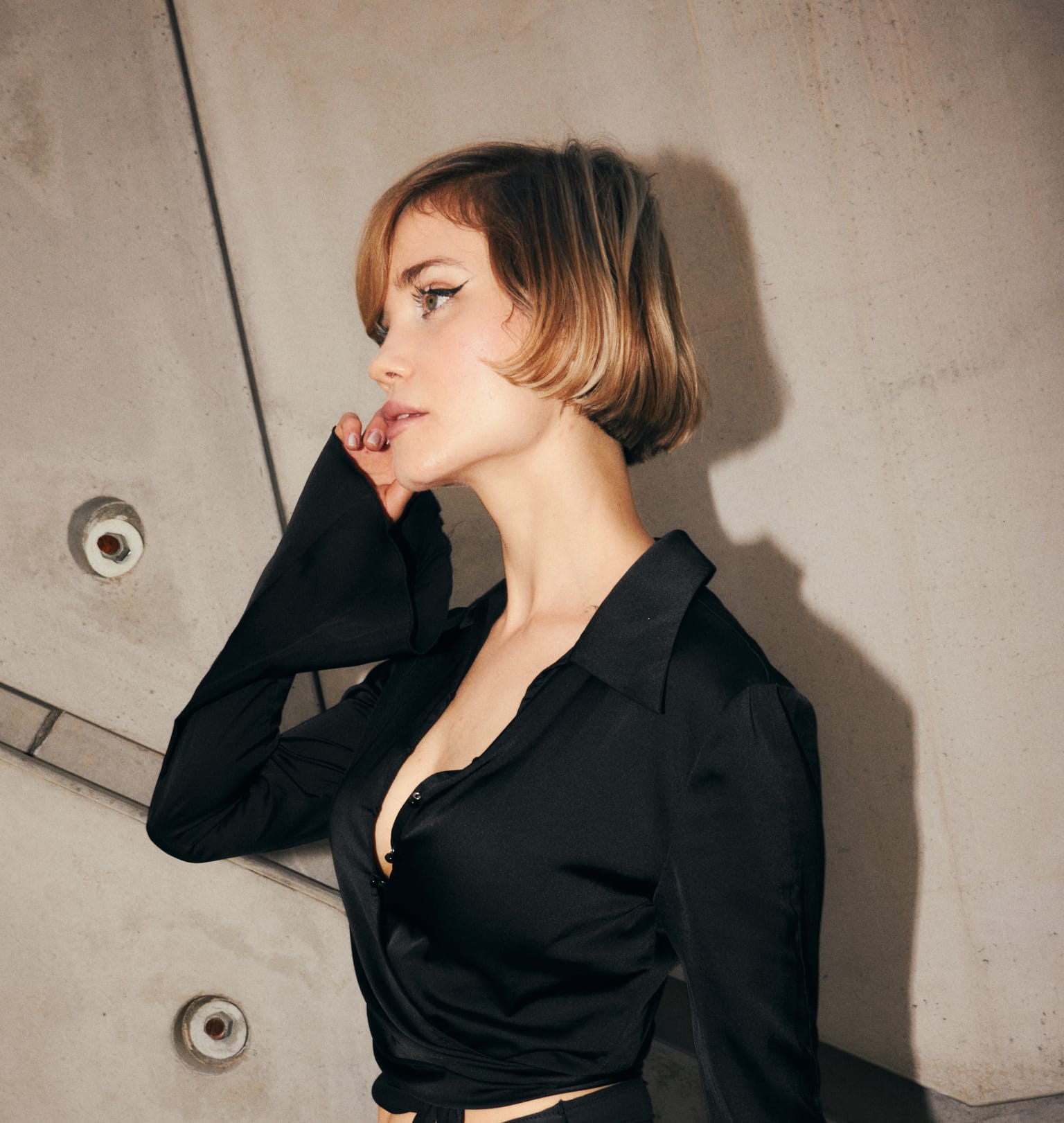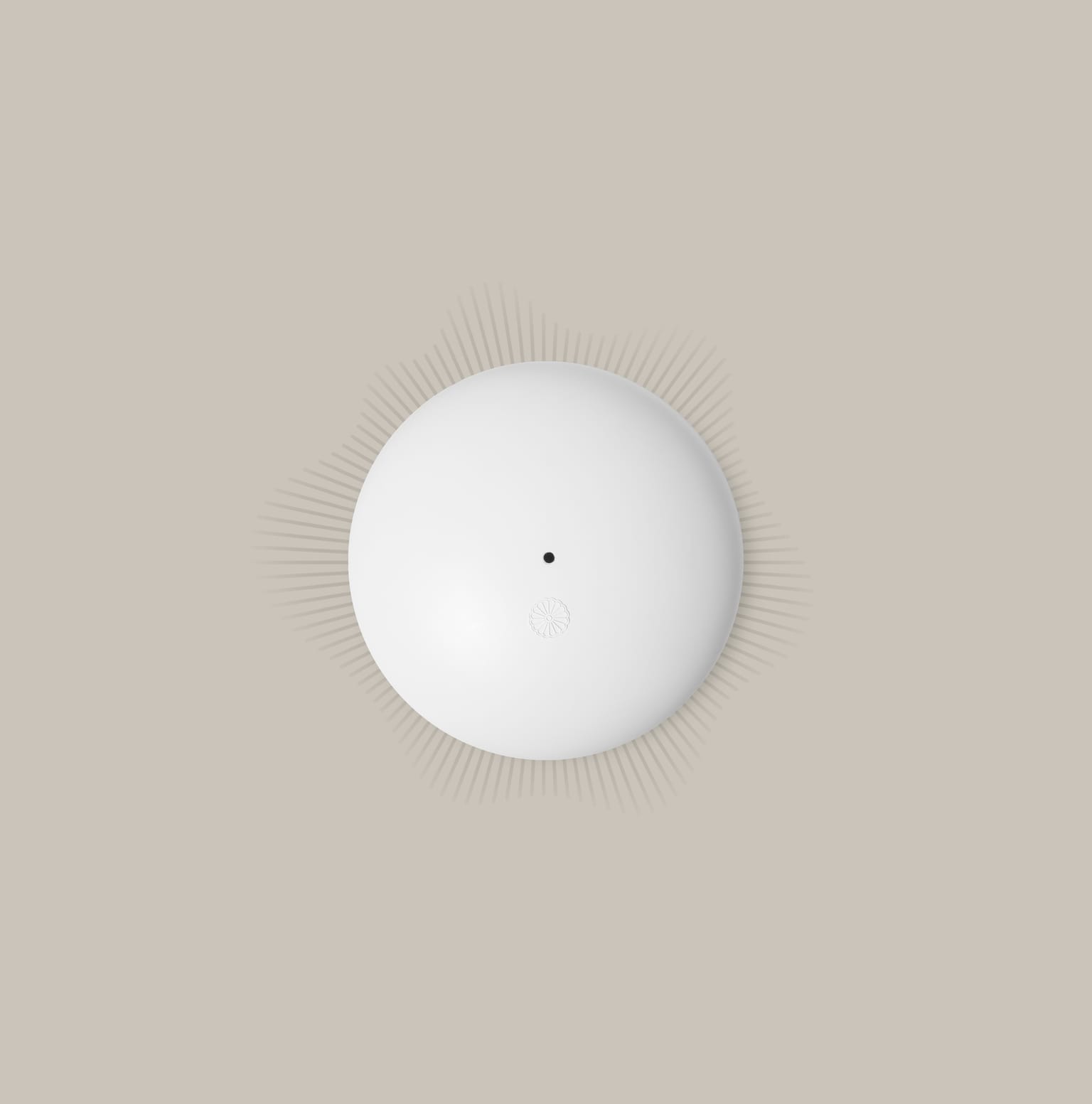In this intimate session, Philip shared his vision on the Interior Trends for Spring and Summer 2026, diving into the theme of “Interior Child.” His insights revealed how a return to comforting, playful, and optimistic aesthetics – through simple shapes, happy colours, and narrative-driven designs – offers a refreshing perspective for interiors and personal well-being.
From embracing tactile joy to rediscovering childlike wonder, this talk uncovered how design can nurture not just our homes, but also our hearts.
Listen to the full audio of the talk here.
The Interior Child — Opening
So we're going to be looking at our trend forecast for next year, which hopefully will inspire you if you're an architect or a designer, or even just for your own home interior. And the purpose of the talk tonight is to focus on this idea of the interior child, or at least the inner child — thinking about everything we have inside of us when we're children, which sometimes we lose as we get older.
Whether it's our intuition or our ability to take risks, or just our imagination which is stifled. This presentation is dedicated to the creativity of the whole design community, especially the designers that are working with Moooi, which supports them.
Joy & Optimism as the New Currency
We're in a period now where joy and optimism are the new currency, because we're living in incredibly difficult times — politically, environmentally, economically, and socially. We're in need of therapy in some way. That can come through colour, or beautiful shapes, or simply beauty (which is also a form of activism). I'm going to share 11 trends in the forecast, all to do with different stages of our lives — different stages of being a baby or a child — and how these trends are leading what is happening in other areas of the interior industry.
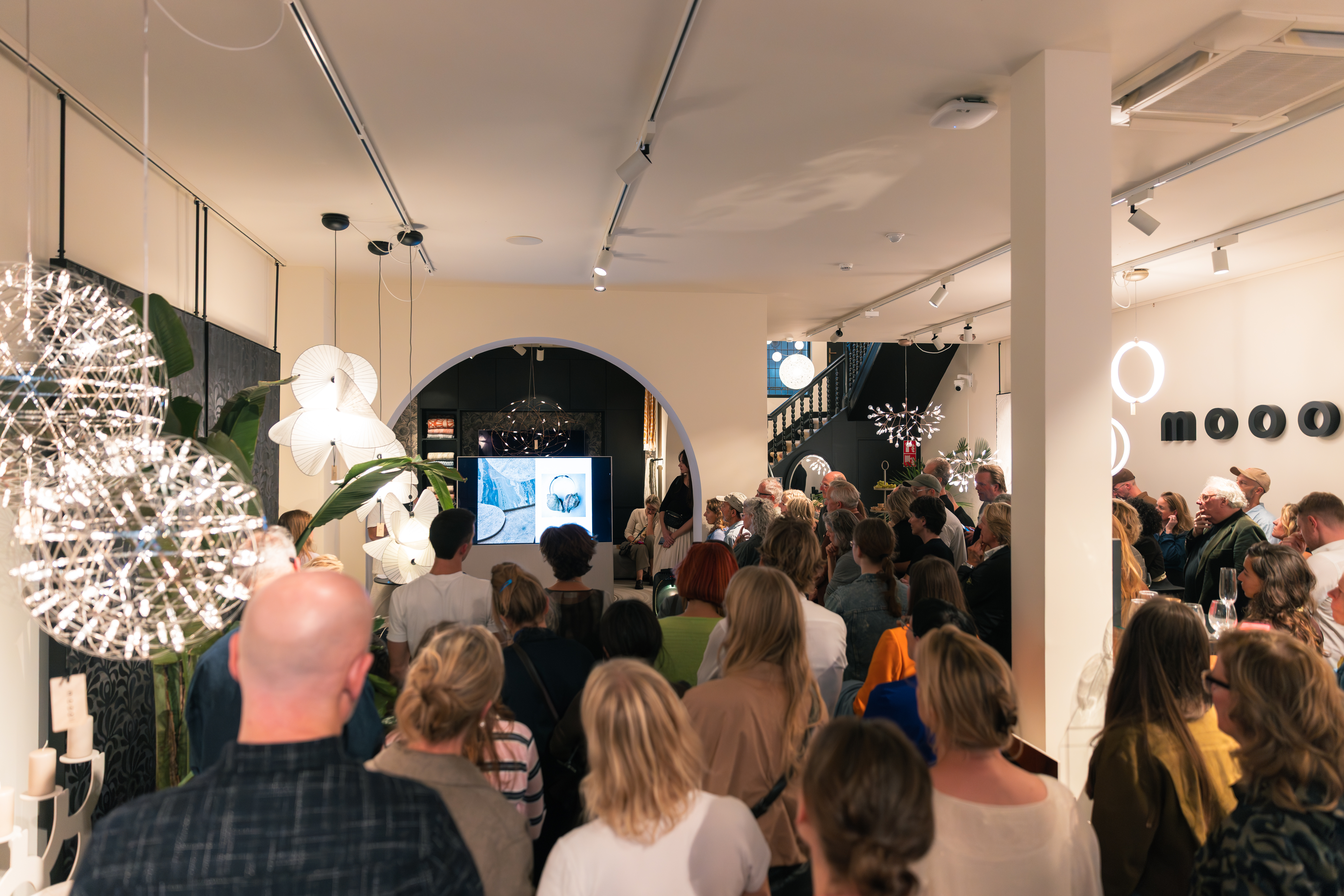
The House as a Playground — Curiosity & Freshness
In this house we can think about the experience of being a baby: curiosity and the freshness we experience as a child. We're a blank slate. Scientists, designers, and other creatives are looking to what is happening in child psychology today — understanding that in the first few years of life you develop your senses, your sense of self, and your creativity. The inroads to the brain are stimulus and play. Play is super important — not just for children, but for you as creatives — to continue as much as you can without distractions.
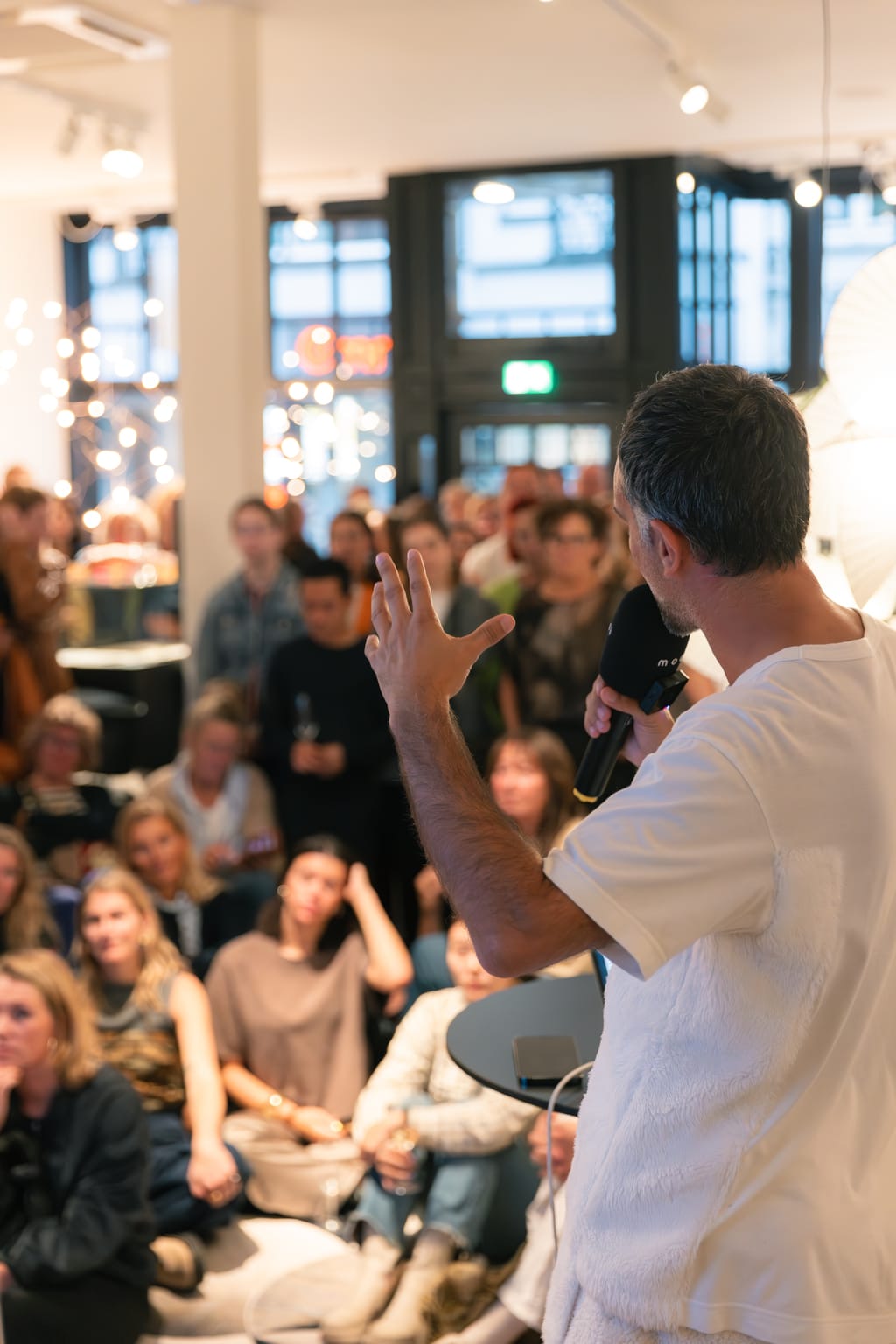
Building Blocks — Shapes, Games & Adult Education
Curiosity leads to shapes of furniture and objects like little blocks that fit into each other — a little bit like Lego or Meccano. There are new products in the industry that are games or educational tools — not for children, but for adults — to keep stimulating the brain and keep everything moving so we don't get things like Alzheimer's or a slowing down of creativity. They come in sophisticated colours. In children's interiors and clothing, colours are completely sophisticated: not just primaries, but teals, terracottas, khaki greens, mustards.
These are like building blocks, as you see in the Nido/Nitty lounge chair here in the showroom. They work together as units and as compositions of colour — blocks coming together.
Making Sense of a Nonsensical World — Pastels as the New Neutrals
Maybe joy and happiness — or the creativity that designers have — is about putting things together, making sense of things in a world which doesn't always make sense. This idea of building is on many young designers' minds. It's influenced by our imaginations and AI, giving us new shapes, colours, and expressions that fit together in beautiful pastel colours which have become like the new neutrals. For young people today, these aren't fantasy colours; they're normal — gender‑free, age‑free, politically free. Pastels are sophisticated and universal.
Designers at the Design Academy Eindhoven and elsewhere are focusing on education and stimulation. Games — card games and others — are a major movement to keep us as fresh and young as possible. People in their 80s and 90s can be some of the youngest people I know, and some of the most boring can be teenagers. We don't have a physical age anymore; we have a mental age.
Nesting — Basketry, Tactility & Natural Neutrals
An important instinct is nesting. Since the pandemic, we return to our homes: families, cooking, reading — pastime over work. Designers create nest‑like materials and interiors inspired by weaving techniques birds use. Think baskets and bassinets (the “Moses basket”) — tactility, natural materials, beautiful design. Aesthetics are for all ages; we influence even the youngest consumers.
Basket weaving is a major revived craft worldwide, especially in the Global South, in colours from grasses and natural linens. Designers mimic what birds and other animals do when creating nests. Mats are a big trend: coarse materials like compact fibres, sisal, paper pulp. Within this neutral story there's room to experiment with colour — sky blue as happiness, new horizon, tomorrow. The more digital we become, the more our fingers crave tactility; the more we veer toward AI, the more we value craft and the human‑made.
Hybrid Weaves — Material Crossovers
Nest‑like weaves mix with ceramics, glass, metal, stone — creating new hybrids. Textiles continue to be security blankets and touch points. Neutral palettes come from natural shades of grasses and undyed fibres. Craft often involves collaborations with communities, especially female communities, investing in places far away. These trends apply to intimate spaces and large‑scale architecture, hospitality, and public installations.
Cardboard Culture — Paper, Pulp & Make‑Do Design
Children create anything out of cardboard. As you notice when you buy something and leave the box open, a cat or child is inside making a cubby house. Many designers return to the tactility and colour of cardboard — for pop‑ups and temporary retail, lightweight perforated walls and furniture. Designers are rediscovering simplicity, lightness, and experiment.
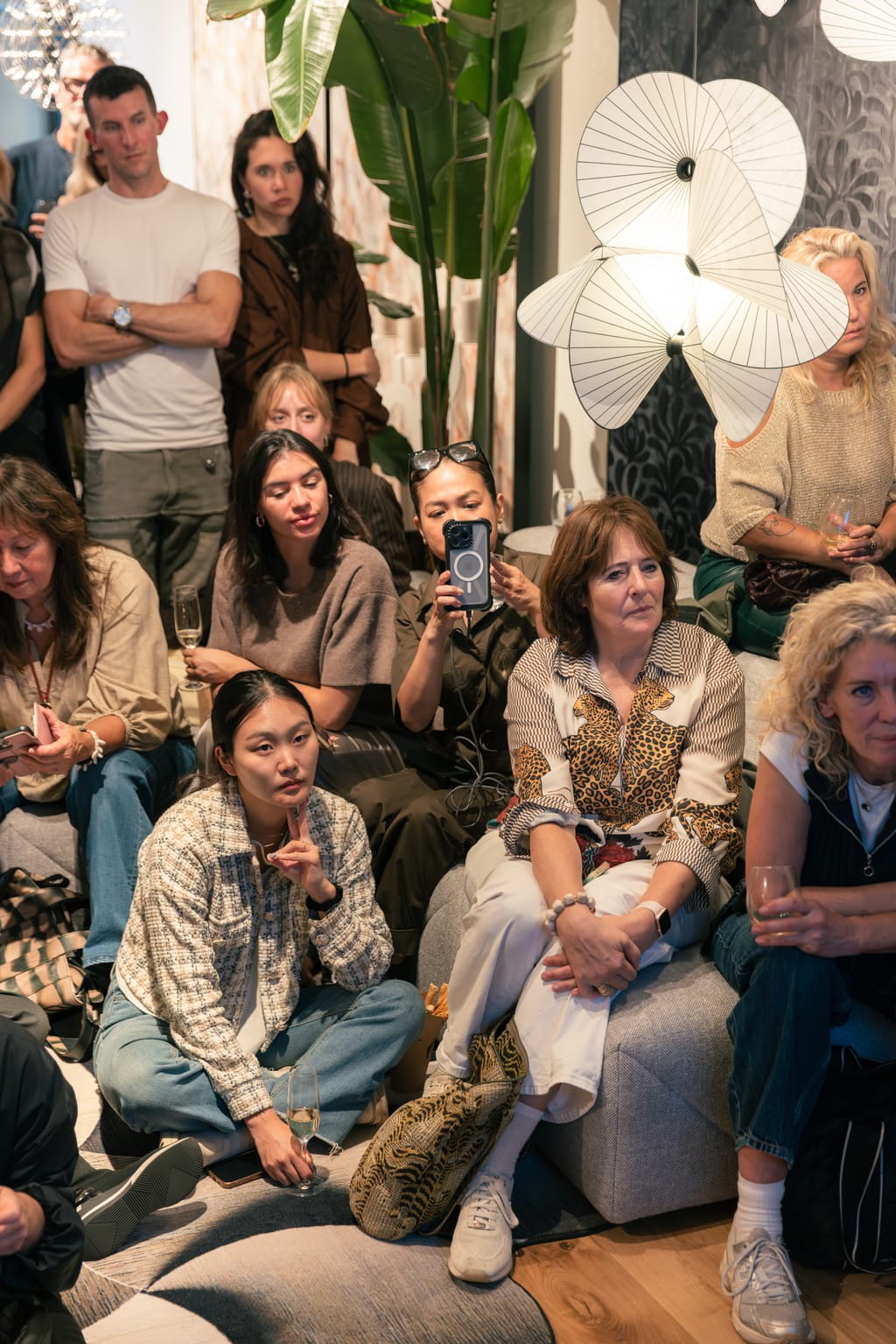
Max Lamb and others explore papier‑mâché and cardboard in craft colours. What was once “boring” (beiges, chinos) is now sophisticated. Paper is the material of the future. It's sustainable to recycle and inspiring to work with — especially pulp. Textiles mimic cardboard: stiffer, thicker, heavier, especially in craft colours. There's folding, origami, temporary spaces, improvised and make‑do design — casual and non‑committal. As accents, add brights like green or sky blue to edge a product, give it a focal point. Even ceramics mimic cardboard — a disheveled, “homeless” aesthetic. Make‑do pieces scattered in young interiors are playful and fun; you can tape, reinvent, or throw them away.
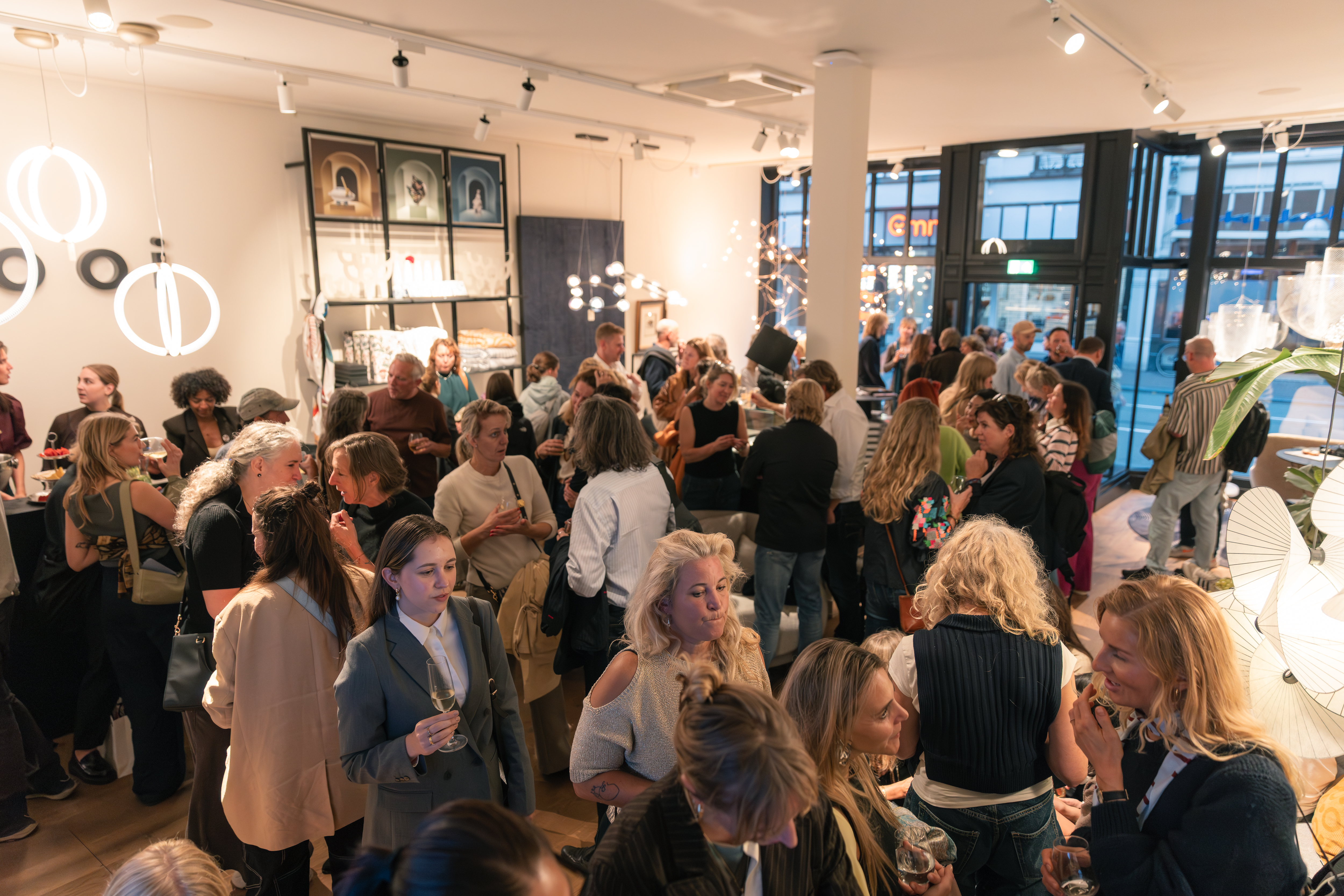
Constructing Purpose — Tools, Carpentry & Honest Joints
Building house becomes an important instinct. With the onslaught of AI threatening jobs, people value the hand‑produced more than ever. Factory workers, bakers, mechanics, hairdressers, ceramicists, farmers — the new cool jobs. Young people seek purpose; it's satisfying to do things with our hands.
Designers look to the tool shed and carpentry — constructivist pieces where you see all the elements work together. It's the antithesis of flat‑pack disposable: you see the joints and celebrate carpentry — Japanese joints and others. Be honest, authentic, transparent: show how everything works instead of hiding it.
Architecture as Installation — Stairs, Blocks & Built‑Ins
Stairs are centrepieces in retail and public spaces — giant installations or sculptures. It's cooler to take the stairs than the elevator. Designers move toward brutalist, sturdy applications of materials — sturdy, gritty textiles woven so you can see how everything works. “No screw, no glue” — things fit into each other. People are obsessed with processes — how things are made — just as they care where food comes from.
We see retail and museum annexes; minimal installations (Donald Judd remains a reference). Built‑in furniture comes back: beds in cupboards, containing spaces. It's comforting to be in small spaces rather than big open ones. We crave intimate spaces with small objects for coziness, with room for colour to show grain and real wood — celebrating organic elements even with crazy colouring.
Construction helps us feel we have control in a world where we’ve lost control. Some objects use no glue or screws. Joost van Bleiswijk puts everything together like a kid — elements cut on a mill slide into each other to form a cupboard.
Touch & Cuddle — Hyper‑Plush & Animated Objects
Tactility and touch: we need cuddles again, gravitating to hugging and being together — celebrating humanity, empathy, and hope instead of division, trauma, stress, and hate. In Milan this year, many sofas and rugs were hyper‑plush — five‑centimetre‑thick piles. Designers give objects character — little ears, little tails — making them endearing and cute. Armchairs become friends; sometimes you have a longer relationship with your armchair than with your partner — choose furniture wisely!
Animating objects gives them soul and personality — playful, very much the ethos of Moooi. Thick felted materials absorb stress; furniture, textiles, and clothing wrap us up and keep us cozy. Knitwear makes a big comeback. Plush and faux fur are in fashion — fringes, roving yarns, rough edges mimic fur, whether machine‑made or handmade. Accents of green or pink with neutrals create cozy environments. These are the materials you touch all day; they keep you calm and reduce stress.
Octopuses are a trend, especially as toys — perhaps due to a documentary — alongside bright accents within neutrals to bring life and joy. Characters in retail and at home — teddy bears and alien‑like creatures — expand beyond Japan to the rest of the world because we're bereft of fantasy and touch.
Robbie Williams’ Introvert armchair contains you and gives you something to touch — texture and tactility in upholstery. Patricia Urquiola’s sofa (a kidney shape) encapsulates you and gives you something to crawl into; your feet or hands slide into a crevice — snug like being tucked in as a child. Comfort, sleep, solace: interiors, furniture, and textiles keep us company.
Papier‑Mâché & Blobular Forms — Lightweight Fantasy
Paper is super sustainable and ecological — especially pulp. Papier‑mâché revives like cardboard: lightweight objects, low transport weight, easily moulded shapes; you can play, try, discard, start again — like Play‑Doh. Many young designers in the Netherlands create playful, blobular shapes — experimenting with creativity as if an alien co‑designed your furniture. Colours are playful yet sophisticated, next to neutrals like grey (making a comeback). Fantasy shapes come from alternative realities, the metaverse, or AI (if you prompt correctly). Materials and shapes feel unfamiliar yet endearing — organic, textured like stone or chalk. Sculpted, archaic design that’s completely contemporary — like interiors for Fred and Wilma Flintstone.
Even vases are papier‑mâché. Designers in the Netherlands work this way. We create still lifes — composing objects to bring stability, peace, and beauty. In public space and pop‑ups, papier‑mâché gives freedom and oversized shapes; you can make very large pieces with no limits.
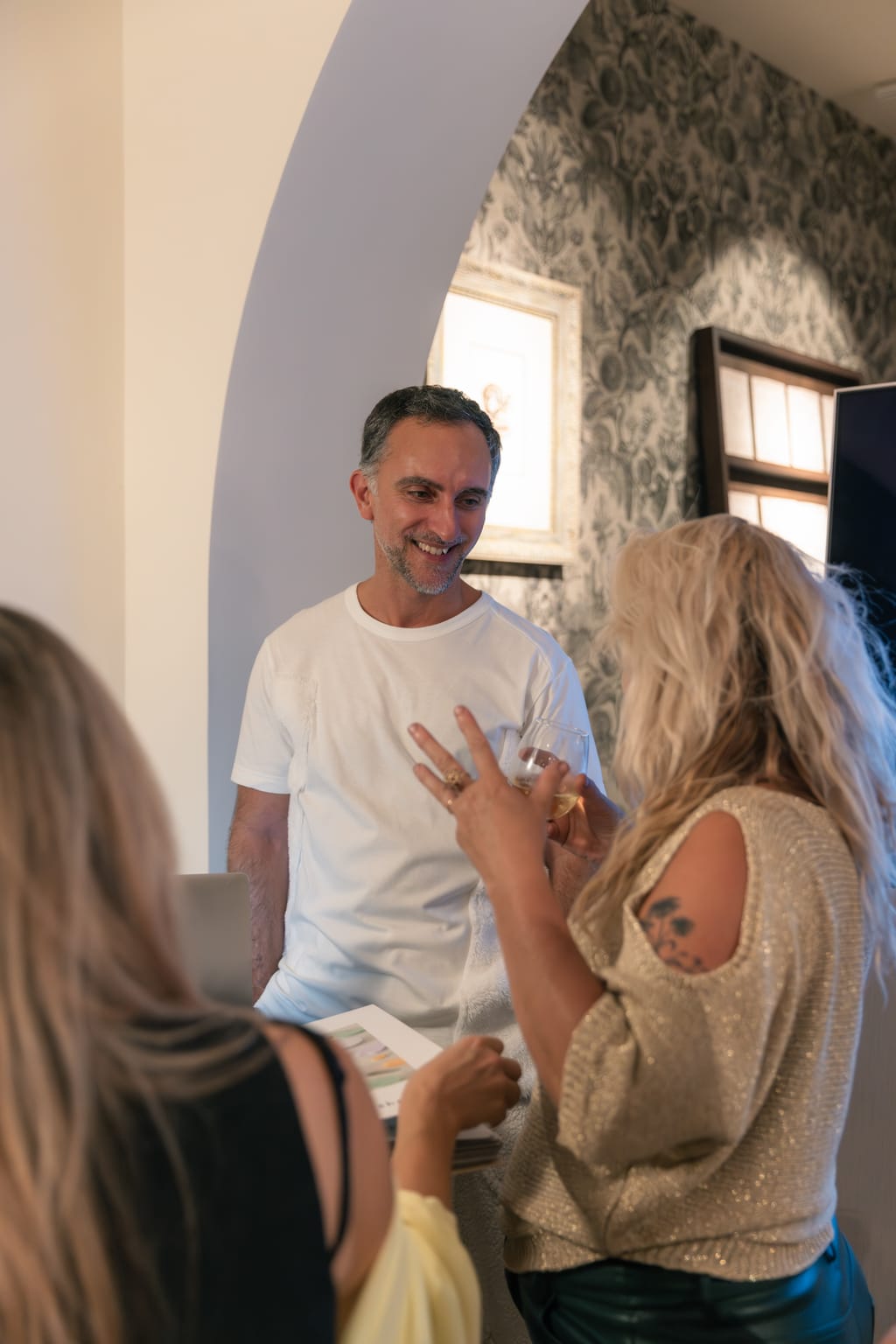
There’s renewed interest in children's drawings — exhibitions in the Netherlands celebrate naïveté and creativity before it’s trained out. In children's drawings, colours are free; shapes are simplistic; black outlines create contrast and focus. There’s a return to cylindrical structures for tables and chairs — a nod to 1960s Italian industrial supports. Hybrids emerge between modernism and make‑do design, recycling and improvising lighting with industrial ingredients, bright red or orange accents to enliven neutral or hard spaces.
Textiles embrace drawing and illustration, especially carpets — a Moooi signature. Black‑and‑white drawing, sketching, doodling: Faye Toogood is known for sketched interiors, rugs, and objects. Organic neutral interiors pair with rugs like Moooi’s Pure Shell by Janna Kleine‑Kamer — calm by name and nature.
Drawing in Space — Naïve Lines, 2D/3D Hybrids
When you want imagination to run wild, you doodle — relaxing and brainstorming toward clarity. Some designers “draw in space” with cords or moulded furniture. Front (Sweden), a Moooi collaborator, used rapid prototyping to draw in air; the 3D print became the object. Radiators, artworks, textiles, and a fan by Maarten Baas are drawn in a childish way — drawn in 3D, drawn in the air. This affects small objects like vases and lighting — free of lampshades — exposing structure, hinting at 2D drawing.
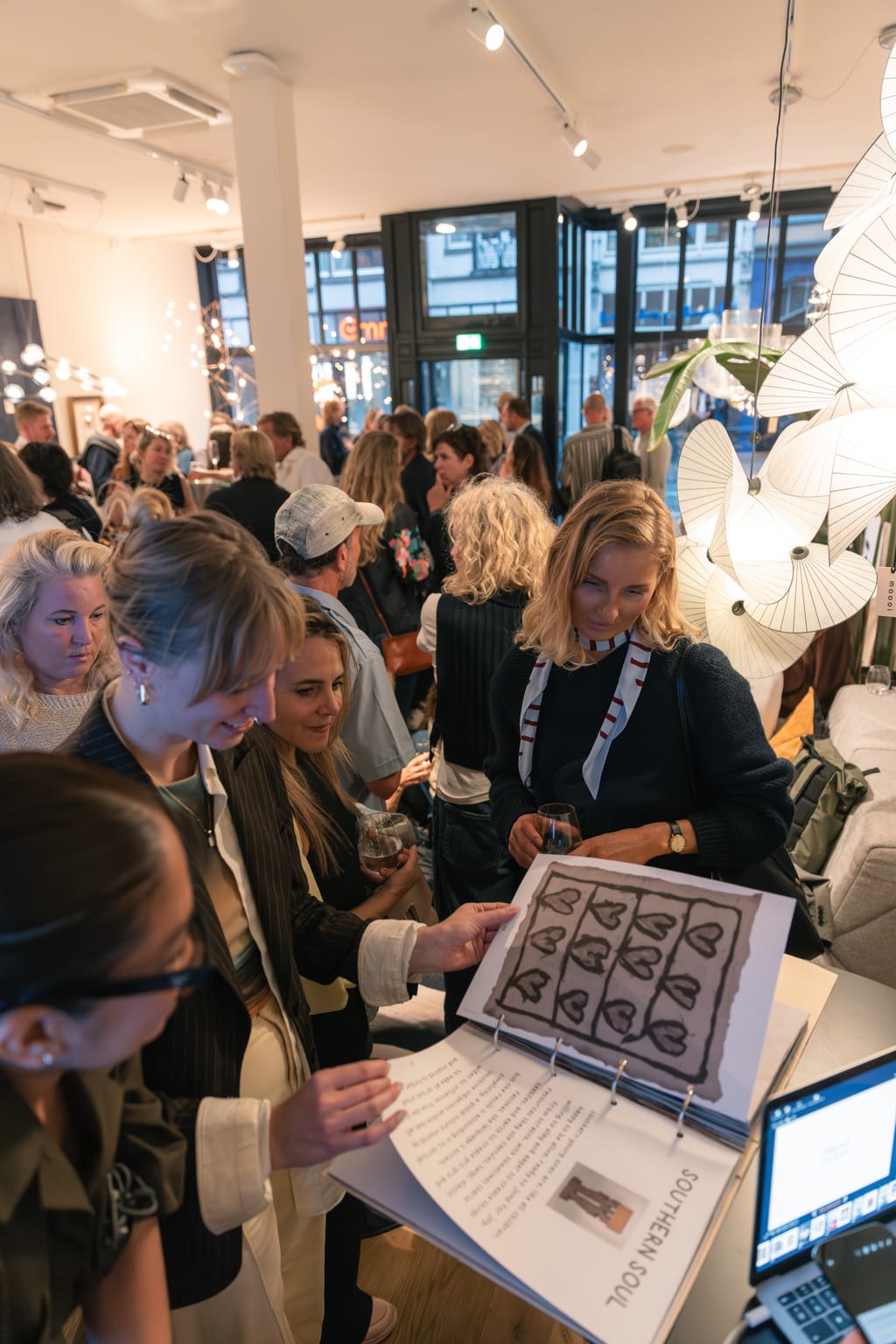
Colour Play — Theory, Freedom & 2D Cartoon Aesthetics
We need optimism and hope. Colour is an educational tool for children and designers alike. As adults, we might work differently than as kids. A movement of young designers mimics what we did as children: free, irreverent play with colour — play‑doh, crayons, improvised palettes.
Furniture pieces and architecture fit together like composed still lifes. Beyond shape, colour palettes are sophisticated — Scandinavian, Japanese, Dutch — nuanced and uplifting rather than primary. Colour meets craft — tiles and ceramics hand‑painted. There’s also a 2D application: Richard Woods’ cartoon‑like furniture offered a 2D aesthetic, echoed by Moooi’s playful spirit. Free drawing, colour, joy, creativity — toned down (if desired) through recycled ideas and collage: a flat 2D aesthetic with movement and shape. Think of artists celebrating child‑like painting and the rise of outsider art — an untrained eye that fascinates.
Paper garlands and parties: since COVID, summer gatherings outdoors, inspired by places like Mexico and the Global South.

Metals Return — Stainless, Alloy, Industrial Shine
A key material trend for architects: stainless steel and metal revival. It’s the only non‑optimistic trend here — heavy, brutalist — yet also about alloys, alchemy, and shine — reflection and energy. There’s a return to industrial, serial design, often silver. Just when pink gold and gold proliferated, grey and silver are back. It started in kitchens (and platinum computers) and now infiltrates jewellery and interiors.
Designers blow up metallic sheets, fold them like plywood, or improvise tubes for stools and tables — with titanium, rose gold, and green accents. Kitchen cladding and splashes use stainless steel. Mostly brushed metal — matte and textured. As it grows, we’ll see more finishes, including polished. Textiles explore metallic yarns; aluminium recycling and multi‑colouring of metal shades combine. For some, it cools the palette after a decade of warm taupes and beiges — a more austere, harder mood.
Natural History — Curiosity, Collage & Timelines
For children, natural history and curiosity are essential. Kids learn about nature on YouTube and want safaris from video streams.
Regardless of decade, nature is a point of interest: you look closely, analyse, imagine, memorise. Curiosity — the secret to staying young — is what designers seek: focusing closely instead of swiping through sensory overload. Pink can be a neutral, paired with stone and natural materials; green too.
Children make still lifes and collect. People recycle summer finds from the beach — contemporary artefacts and archaeology, faded textures. It’s inspiring for recycling, for stone, marble, and ceramic — putting everything together. Textiles collage patterns upon patterns. In the Netherlands, colonial motifs are irreverently mixed; collage and coordination make a family of differences.
Natural history inspires organic shapes in architecture and materials, especially bathrooms. Industrial glass revives — hammered, liquid‑looking, opaque. AI prompts can invent couches or material stories from other worlds with weird colours and combinations. Returning to nature celebrates time — long time, archaic time. Designers focus on stone, especially travertine with alluvial layers.
Fairy Tales & Folklore — Narrative Design
We must escape reality sometimes. Storytelling and narration persist — around for more than 20 years — connecting people through fables, heritage, fantasy books, and sci‑fi. We escape into hybrid realities while embracing illustration, murals, landscape wallpapers, and small objects of contemporary folklore — European and universal — connecting us all. A brutalist Art Nouveau emerges: nature in abstract heavy materials like bronze and cast iron. We’re moving into over‑decorating — lots of things around us to keep us company: pattern, craft, motifs, and varied shapes.
Mushrooms offer endless colour palettes. Illustration, printing, photo printing, nostalgia — young people seek memory for a sense of place (even pre‑birth eras), learned through TV, series, TikToks, reels. Cozy traditional environments grow. Tradition sits between left and right — a common ground to get back together. Surrealism and play with proportion appear — like Kiki van Eijk’s graduation work — living in a doll’s house where everything becomes fantasy and comfort. Think of K2 Good’s sofa made of many mattresses piled up — like the famous story.
We can be eccentric and embrace the unexpected — a Moooi hallmark: any small interior can hold fantasy. No matter how big your space is, you can always have creativity, beauty, fun, and joy. We need a new reality — nicer, dreamier — a place where imagination runs wild; where we reconnect and celebrate creativity, curiosity, and imagination.

Closing
Hopefully that gave you a big boost of joy. If any of you are professionals working with trend tools, I have a trend book here if you want to look at the materials and colours IRL. If anybody has questions, I’m happy to meet you during the drink.
